Chinese vs Japanese facial features have always sparked curiosity and comparison when it comes to beauty and identity. People across the world often search for the differences—whether driven by cultural interest, skincare insights, or aesthetic appeal. But the real question remains: Is one better than the other, or are they simply unique in their own way?
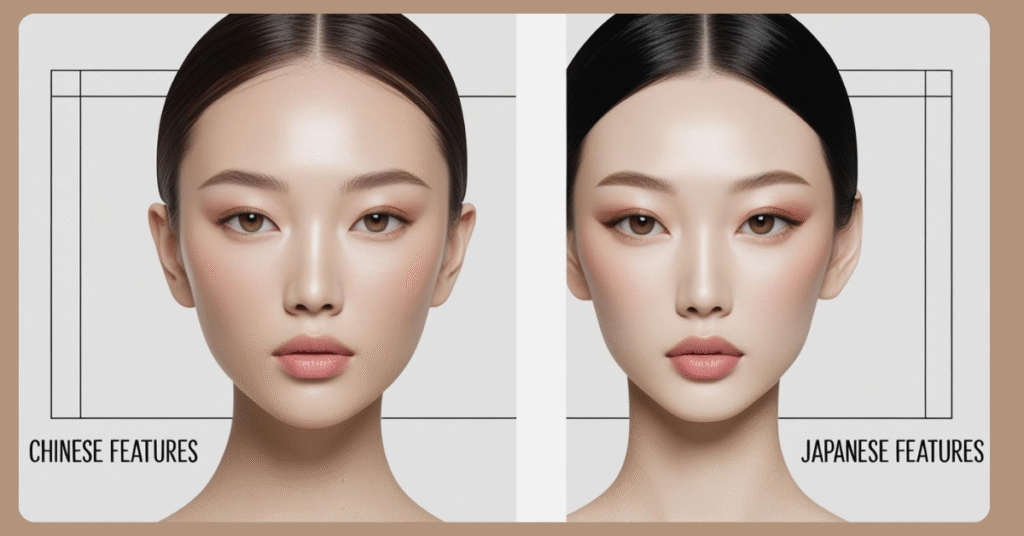
In this blog, we’ll dive deep into the physical traits, cultural perceptions, skincare practices, and beauty standards linked with Chinese and Japanese facial features. By the end, you’ll have a clear, well-rounded understanding—without stereotypes or bias.
Understanding Chinese vs Japanese Facial Features
Facial features are shaped by genetics, geography, and history. East Asian populations share similarities, but small distinctions exist that influence how people perceive differences.
Common Chinese Facial Features
- Face Shape: More often round or square
- Eyes: Monolids or double eyelids, usually almond-shaped
- Nose: Generally broader with a shorter bridge
- Jawline: Slightly wider, giving a fuller appearance
- Skin Tone: Range from fair to medium-light, often with a warm undertone
Common Japanese Facial Features
- Face Shape: Often longer or oval-shaped
- Eyes: Double eyelids more common, with slightly larger appearance
- Nose: Higher and narrower bridge compared to Chinese features
- Jawline: Softer, less wide than Chinese facial structures
- Skin Tone: Typically fairer with cooler or neutral undertones
👉 Note: These are generalized observations. Not every Chinese or Japanese individual fits these features, as there is natural variation within each group.
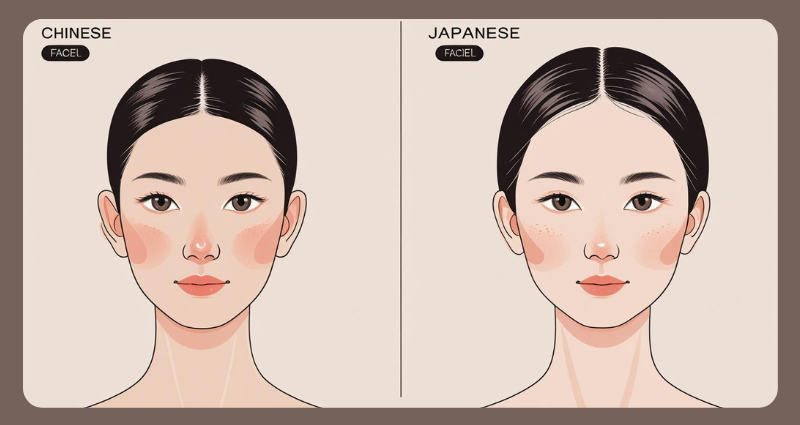
Why Do People Compare Chinese vs Japanese Facial Features?
The fascination comes from:
- Cultural curiosity – people want to understand differences between East Asian ethnicities.
- Beauty standards – global media often highlights subtle distinctions in attractiveness.
- Skincare trends – Chinese and Japanese beauty practices inspire global skincare routines.
But the real truth? Neither is “better.” Beauty is subjective, and each culture celebrates unique traits.
Skincare Differences: Chinese vs Japanese Approaches
Interestingly, the skincare philosophy in each country also aligns with their facial features and cultural beauty ideals.
Chinese Skincare Approach
- Focus on herbal remedies and natural ingredients like green tea, ginseng, and pearl powder.
- Emphasis on skin brightening for an even, glowing complexion.
- Popular treatments: Gua Sha (stone massage) and jade rollers for facial contouring.
Japanese Skincare Approach
- Centered around hydration and anti-aging.
- Use of rice water, seaweed, and camellia oil for smooth, plump skin.
- “Minimalist layering” routines—fewer but effective products.
💡 Practical Tip: If you want a radiant glow, explore Chinese-inspired brightening masks. If you want youthful, firm skin, Japanese skincare layering is a great choice.
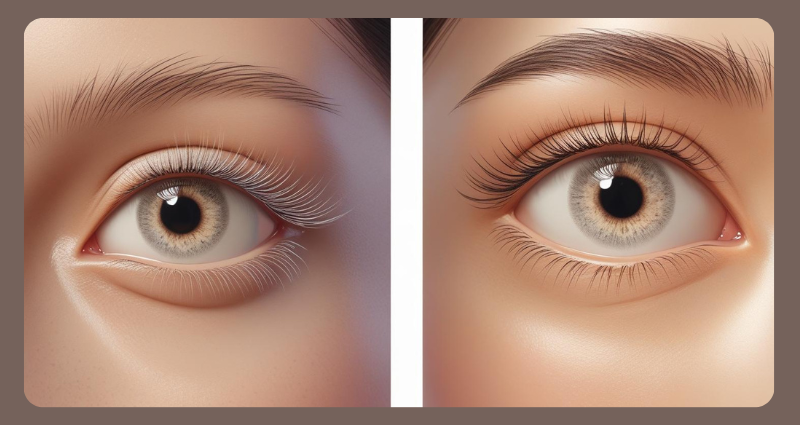
Chinese vs Japanese Beauty Standards
In China
- Preference for fair skin, a V-shaped jawline, and big eyes.
- Skincare products often market whitening and contouring benefits.
In Japan
- Beauty ideal focuses on natural, soft, and youthful appearance.
- The concept of “mochi skin”—smooth, supple, baby-like skin—is highly desirable.
This difference influences makeup styles too. Chinese makeup often emphasizes sharper eyeliner and bold lips, while Japanese makeup focuses on soft colors and a subtle, innocent look.
Which is Better – Chinese or Japanese Facial Features?
The direct answer: Neither is better.
Instead, think of it this way:
- Chinese features often appear stronger and fuller, associated with vitality.
- Japanese features are typically softer and refined, associated with elegance.
But beauty is not universal. What’s attractive in Beijing may differ from what’s admired in Tokyo—or Paris, New York, or Delhi.
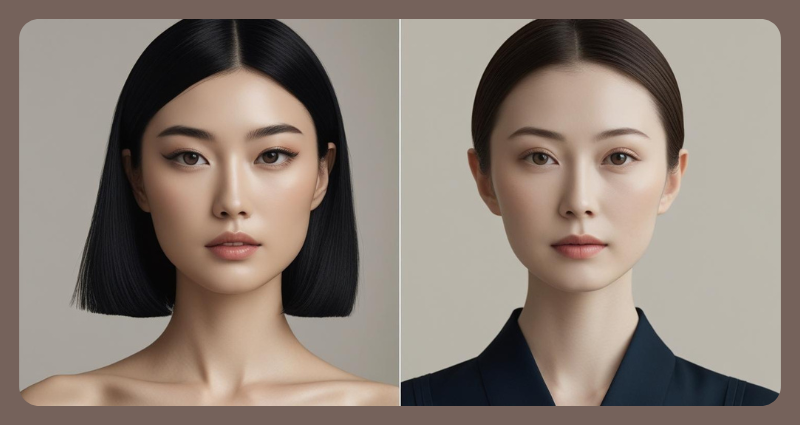
Practical Tips: Appreciating Your Own Features
- Stop comparing – embrace your natural look.
- Adopt skincare – try herbal masks (Chinese) or hydrating essences (Japanese).
- Play with makeup styles – experiment with both bold (Chinese) and soft (Japanese) looks.
- Confidence is key – no matter your facial features, how you carry yourself matters most.
FAQs on Chinese vs Japanese Facial Features
Q1. What are the key differences between Chinese and Japanese facial features?
While there are general differences in face shape, eyes, and nose structure, these distinctions are subtle. It’s not always accurate to judge based on appearance alone.
Q2. Do Chinese people and Japanese people have the same skin tone?
Both groups typically range from fair to light-medium skin tones, but undertones can differ (Chinese – warmer, Japanese – cooler).
Q3. Why do Japanese and Chinese beauty standards differ?
Cultural history, media influence, and societal ideals shape different beauty standards. For example, Japan values youthful, natural looks, while China highlights bright, fair, and sculpted features.
Q4. Which skincare is better: Chinese or Japanese?
It depends on your skin goals. For glow and brightness, Chinese herbal skincare is great. For hydration and anti-aging, Japanese routines are highly effective.
Q5. Can anyone follow Chinese or Japanese skincare methods?
Yes! Both approaches are adaptable to global skin types, as long as you choose products suited to your skin needs.
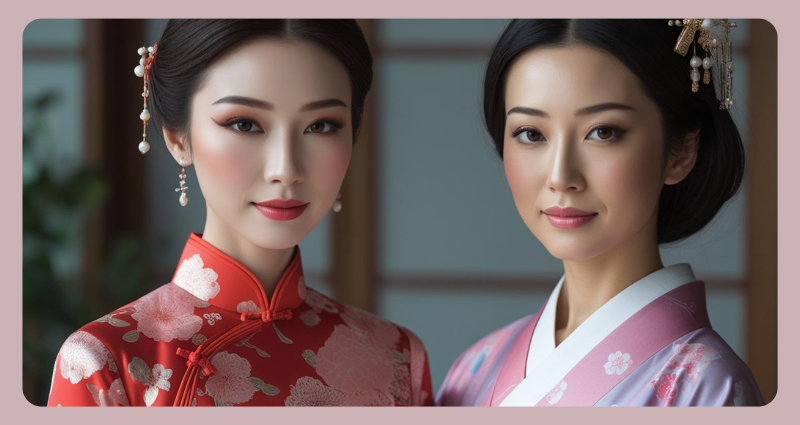
Conclusion: Celebrate Uniqueness
The debate of Chinese vs Japanese facial features isn’t about choosing which is better—it’s about appreciating cultural diversity and individuality. Each has unique traits that contribute to the beauty of human variation.
🌸 Whether you’re inspired by Chinese herbal beauty secrets or Japanese minimalist routines, the key takeaway is this: real beauty lies in confidence, self-care, and embracing what makes you unique.
✨ Want more beauty and skincare insights? Subscribe to our newsletter for expert skincare tips and cultural beauty trends!
